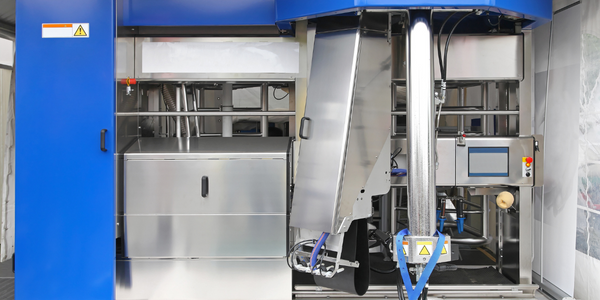Customer Company Size
Large Corporate
Region
- America
Country
- United States
Product
- HubTran
- Aljex Software
Tech Stack
- Optical Character Recognition
- Artificial Intelligence
- Cloud-based System
Implementation Scale
- Enterprise-wide Deployment
Impact Metrics
- Productivity Improvements
- Cost Savings
Technology Category
- Platform as a Service (PaaS) - Data Management Platforms
Applicable Functions
- Logistics & Transportation
- Procurement
Use Cases
- Supply Chain Visibility
- Process Control & Optimization
Services
- Cloud Planning, Design & Implementation Services
- Data Science Services
About The Customer
NFI Industries is a leading supply chain solutions provider in North America, with annual billing of more than $1.1 billion. The company's brokerage division was launched in 2008 and has grown to 80 employees in four locations as of March 2016. The brokerage moved 105,000 shipments at about $100 million in revenue in the previous year. David Broering, Senior Vice-President at NFI, oversees the brokerage group, as well as NFI’s Transportation Management and Drayage divisions, and the FBA Group, a unit that audits and pays freight bills.
The Challenge
NFI Industries, a top-rated supply chain solutions provider in North America, was experiencing rapid growth in its brokerage division. The company was handling an increasing volume of transactions, which was putting a strain on its Freight Bill Audit (FBA) group. The FBA group was responsible for auditing and paying freight bills from five divisions of NFI. The challenge was to increase the FBA's capacity to handle the growing back-office volume without adding more staff. The company needed a solution that could efficiently process and verify data from various documents and forms related to each load.
The Solution
NFI decided to implement HubTran, a cloud-based platform that uses optical character recognition and artificial intelligence technology to scan, categorize, and extract key data from various documents and forms. The system recognizes documents in any format from any company and links related documents to each other and to their correct load. HubTran then verifies the data according to the customer's procedures, comparing quoted and billed rates, for example. If everything checks out, HubTran presents the bill for payment approval. The solution integrates with NFI's Transportation Management System (TMS), Aljex Software, allowing for seamless data processing and verification.
Operational Impact
Quantitative Benefit

Case Study missing?
Start adding your own!
Register with your work email and create a new case study profile for your business.
Related Case Studies.

Case Study
Remote Temperature Monitoring of Perishable Goods Saves Money
RMONI was facing temperature monitoring challenges in a cold chain business. A cold chain must be established and maintained to ensure goods have been properly refrigerated during every step of the process, making temperature monitoring a critical business function. Manual registration practice can be very costly, labor intensive and prone to mistakes.

Case Study
System 800xA at Indian Cement Plants
Chettinad Cement recognized that further efficiencies could be achieved in its cement manufacturing process. It looked to investing in comprehensive operational and control technologies to manage and derive productivity and energy efficiency gains from the assets on Line 2, their second plant in India.

Case Study
Airbus Soars with Wearable Technology
Building an Airbus aircraft involves complex manufacturing processes consisting of thousands of moving parts. Speed and accuracy are critical to business and competitive advantage. Improvements in both would have high impact on Airbus’ bottom line. Airbus wanted to help operators reduce the complexity of assembling cabin seats and decrease the time required to complete this task.

Case Study
Improving Production Line Efficiency with Ethernet Micro RTU Controller
Moxa was asked to provide a connectivity solution for one of the world's leading cosmetics companies. This multinational corporation, with retail presence in 130 countries, 23 global braches, and over 66,000 employees, sought to improve the efficiency of their production process by migrating from manual monitoring to an automatic productivity monitoring system. The production line was being monitored by ABB Real-TPI, a factory information system that offers data collection and analysis to improve plant efficiency. Due to software limitations, the customer needed an OPC server and a corresponding I/O solution to collect data from additional sensor devices for the Real-TPI system. The goal is to enable the factory information system to more thoroughly collect data from every corner of the production line. This will improve its ability to measure Overall Equipment Effectiveness (OEE) and translate into increased production efficiencies. System Requirements • Instant status updates while still consuming minimal bandwidth to relieve strain on limited factory networks • Interoperable with ABB Real-TPI • Small form factor appropriate for deployment where space is scarce • Remote software management and configuration to simplify operations









